FAST FASHION
Article by Ganit Singh
“My grandmother has only one shirt in her wardrobe. My mother has three. My daughter’s generation, 50. And 48% of them, she never wears.“ — Jack Ma Founder and Executive Chairman of Alibaba Group
I own 10 black T-Shirts. Three from Gap, four from H&M, one from Buffalo and two from Gilden. When it comes to Blue T-Shirts I have at least 5, I probably have 3 Grey T’s, maybe 3 in White and I even have 2 yellow T-Shirts (Don’t ask). The crazy thing is that all of this is still not the entirety of my solid colored T collection. With the count up to 23, we still haven’t discussed how many Red, Pink or Green T’s I own. We have yet to even touch graphic T-Shirts, let alone polo’s, button downs and full sleeves. Hell, we haven’t even talked about pants yet.
Let me tell you up front, I have clothing for all occasions, from weddings to lounging with friends, I have enough clothes for everything that comes my way. Realistically, if I periodically wash and ration properly, I would not need new apparel for at least a decade. Yet none of this stops me from shopping.
The only reason I’m never deterred from my desire to consume is because I perceive my behavior to be relatively normal. I don’t feel like I’m shopping alone in my favorite stores, actually it feels as if I am always waiting in lines. In my mind, I like to think that everyone around me is out shopping too. Who can resist a good deal? 2 for 1? I’ll take 6! Shopping is something that gives me a ton of confidence. When I look good, I feel good.
None the less, I recognize that my wardrobe is a bit excessive (Narnia could be hiding behind it). All of this has made me think about clothes a lot lately, specifically how clothing is consumed. Am I really normal in the way I make purchases or do other people do it differently? I decided to look at the facts.
// How Much Do We Love Clothes?
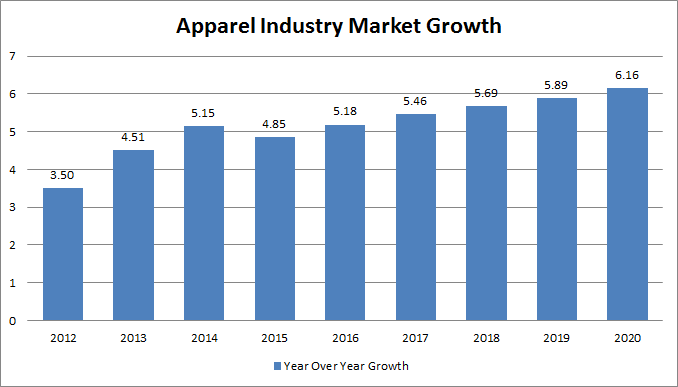
According to MarketLine, a business information company, the global apparel industry has been growing at a 4.78% yearly rate since 2011. Now valued at nearly 1.4 trillion dollars in sales for 2017, the industry shows no signs of slowing as the market is projected to experience 5.91% yearly growth over the next three years.
By 2020, the market size of the apparel industry is expected to reach a mind-boggling 1.65 trillion sales in US dollars worldwide. I was shocked when I discovered this as it amounts to a whopping 60% increase in the market size since the 1.05 trillion dollar pool in 2011.
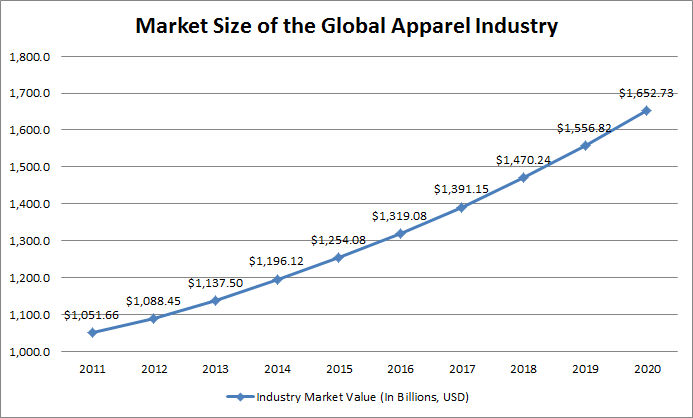
Simply put, this rapid growth means that the average consumer in the world is now buying more than 1.5 times the amount of apparel they did just 6 years ago. (If that doesn’t knock your socks off, I don’t know what will.)
To give you some enhanced perspective, the Worldbank claims that the growth in global GDP from 2011 to 2015 meets an average rate of 2.70%. If we compare the growth of clothing consumption from that period, which MarketLine stipulates to be 4.50%, with the 2.70% average growth in global income, we clearly see something happening: Each year we are more than proportionately increasing the amount of money we spend on clothing.

Statistically then it’s clear that people have a greater interest in shopping than they have had in previous years. Which means that my consumption of clothing, though undoubtedly expansive, really isn’t that insane of a deviation from the norm.
With apparel market growing faster than the global economy, we should expect closets to burst as consumers continue to stuff their wardrobe with increased clothing expenditure.
It seems like these days we have more stuff than we can ever dream of, an estimate by the LA Times even shows that the average US Household holds 300,000 things. But why in the past 6 years has there been such a spike in clothing consumption? Is it because we’ve never had enough clothing historically? That argument doesn’t really hold up, as pre-2011 wasn’t exactly the clothing dark ages.
Personally I believe it has to do with the way that fashion is evolving. I believe that if we want to understand why sales figures keep getting higher and higher, we might learn something from examining the emergence of fast fashion in the 21st century. So let’s examine fast fashion: the place where cheap and trend-heavy outfits are king.
// Welcome To Fast Fashion
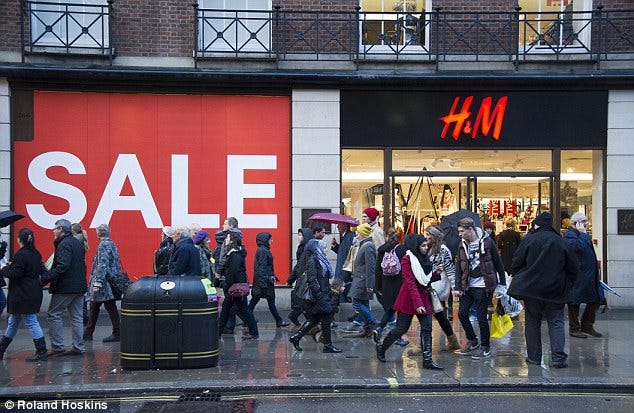
“Fashion constantly changes and so do our customers.” — Stefan Persson, Son of H&M Founder Erling Persson
When it comes to clothing it’s no secret that people want to be trendy. We want to look good in front of our friends and we also want to flex our fashion muscles when it comes to meeting strangers (Or maybe that’s just me). But in a world of Balenciaga, Hugo Boss, Armani Exchange, and Rolex how does one look swanky without breaking the bank? Look no further than the precarious world of fast fashion.
Fast Fashion retailers produce clothes that embodies the style and fashion trends of the modern world. They transform the designs of high society brands (such as Louis Vuitton or Prada) into their own mass produced items that are inexpensive for consumers and bear a strong aesthetic resemblance. Companies like H&M, Zara, Uniqlo and Forever 21 fit this mold as these sorts of brands tend to produce low-cost mimics and basic essential pieces that rotate company shelves frequently.
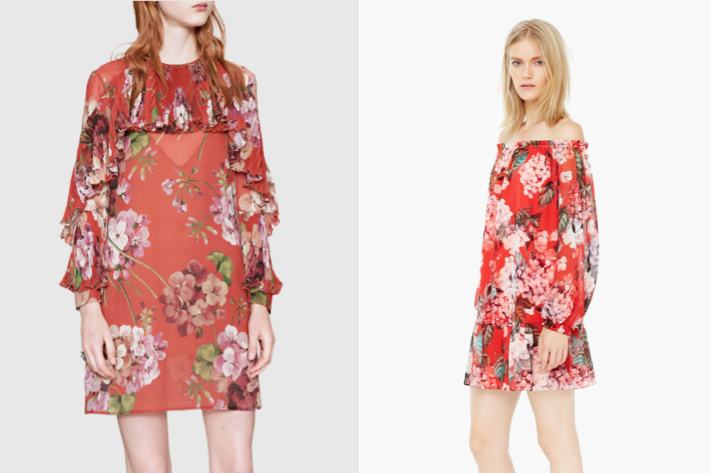
// How Do They Do It?
Fast fashion brands are able to keep their prices low by relying on streamlined supply chains, globally integrated guidelines and policies as well as a quick implementation process.
If we use Zara as a case study, we can definitely see this quick implementation process in the brand’s logistic operations. Zara is known for being able to create a new design and have the finished product (based on said design) shipped to all 2,213 stores in just two short weeks. In these two weeks, Zara is able to design, produce, market and distribute a brand new item that reaches all 93 countries that the clothing giant operates in. This ridiculous efficiency has given an edge to fast fashion companies that traditional retailers will always struggle to mirror. Never before has clothing been mass produced in such an economical format. This method of conducting business is extremely valuable in this fashion industry as many experts believe we no longer follow a 4 season fashion calendar, but rather we are in the 52 micro-seasons of fashion.
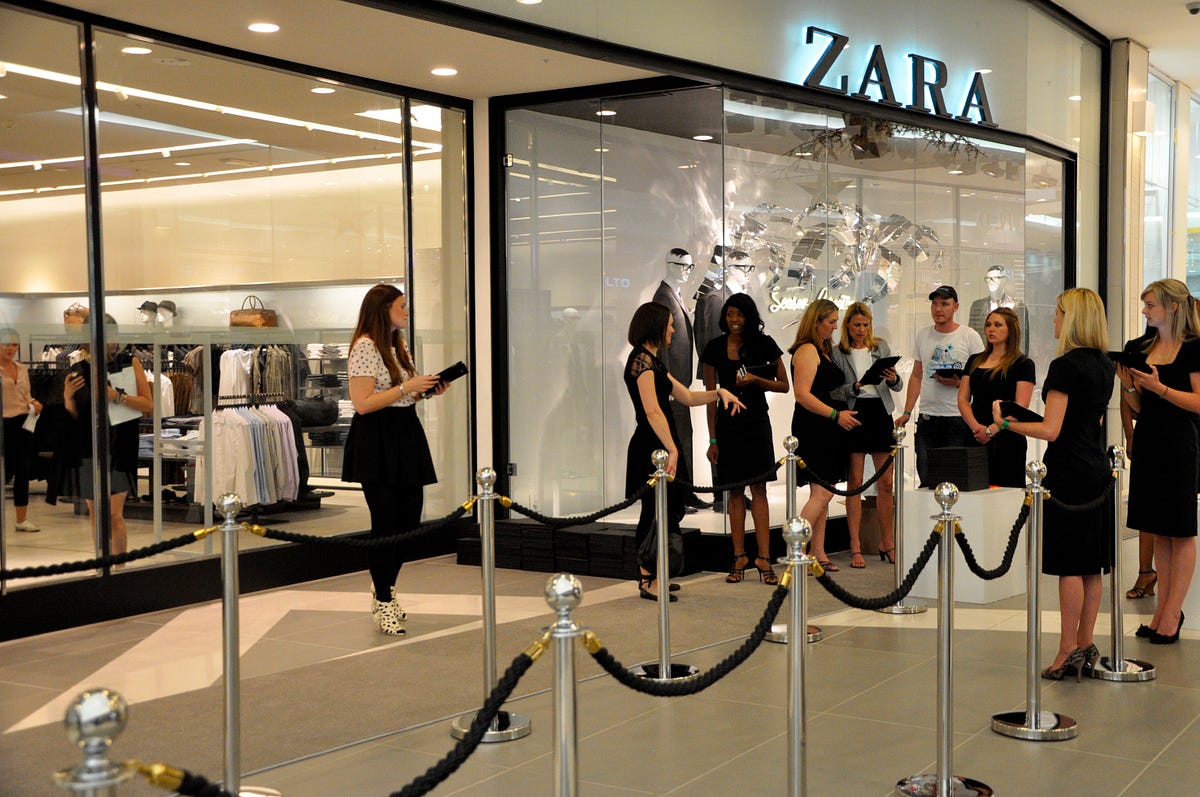
But getting products designed and distributed quickly is not the only trick that fast fashion retailers have in their arsenal. They are also well-known for keeping very limited stock on all their items. This is done because it preserves the ability for companies to make impromptu stock orders which benefits retailers by allowing them to adjust inventory based on changes in consumer interest. This works amazingly in the world of fashion, because with every passing day comes another #OOTD. In the case of Zara, the clothing giant makes it a priority to stay connected with the latest trends and style formats, thus products are imported in low stock at an alarming twice-a-week schedule.
// How Far Has It Spread?
From what I understand, fast fashion is not unlike fast food: the product is addicting, suitable, cheap to purchase and can be found almost anywhere. It’s amazing to think that globalization has brought us to a place in which fast fashion retailers are able to integrate their product offerings so seamlessly among the globe. The eminence of fast fashion retailers is not unlike the prominence of fast food tycoon McDonald’s; whose unparalleled appeal has led to the presence of over 33,000 restaurants operating worldwide.
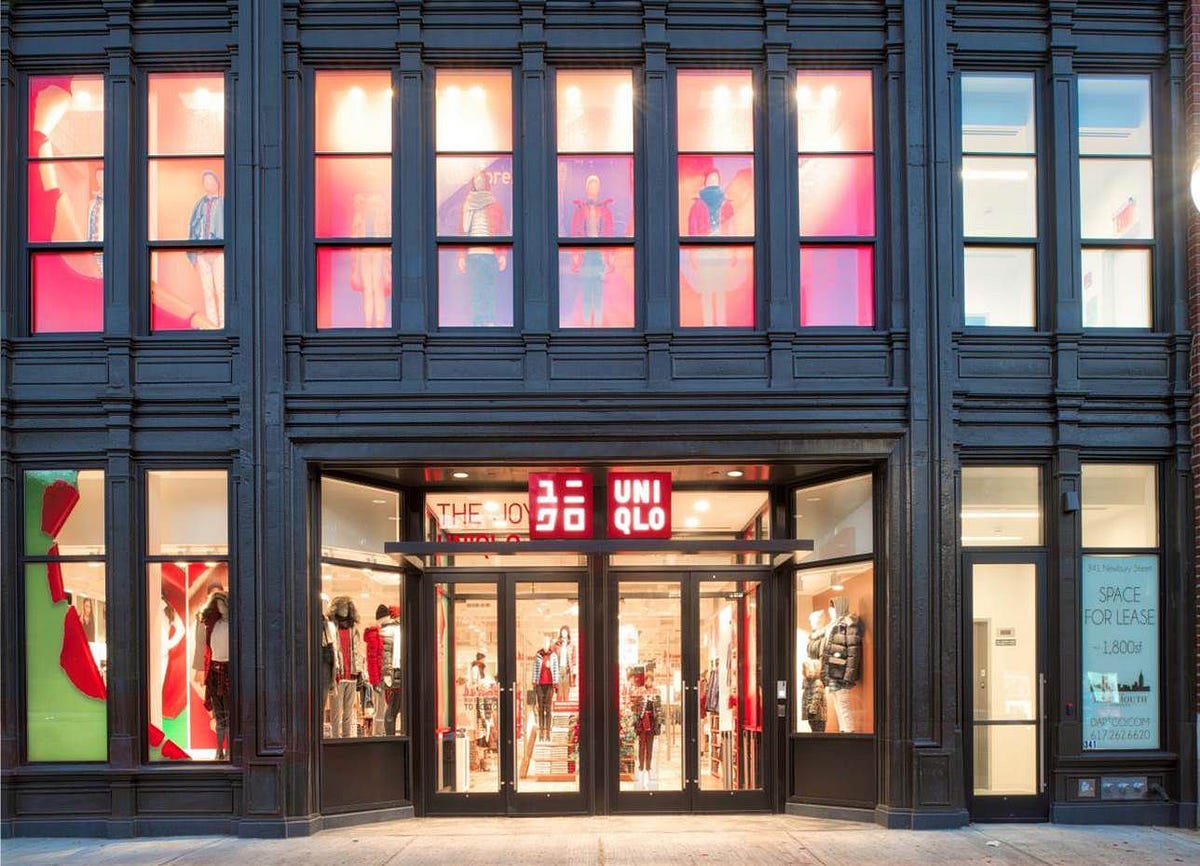
In 2016, H&M opened 427 new stores. Four hundred and twenty-seven stores! That’s almost 1.17 stores a day. This fast fashion retailer employs over 160,000 people in 62 different nations and continues to grow their prominent business both physically and online. Believe it or not, H&M isn’t even the apex of brand expansion as Zara plans on growing even faster. Blueprints have been made for Zara to open 500 new stores by 2017’s end. This sort of rapid expansion is common practice for the many competitors in the industry as territory is vital in the pursuit to attain a healthy presence in the market.
// Fast Fashion Is Taking Over
“The customer has always driven the business model” — Amancio Ortega, Founder of Zara
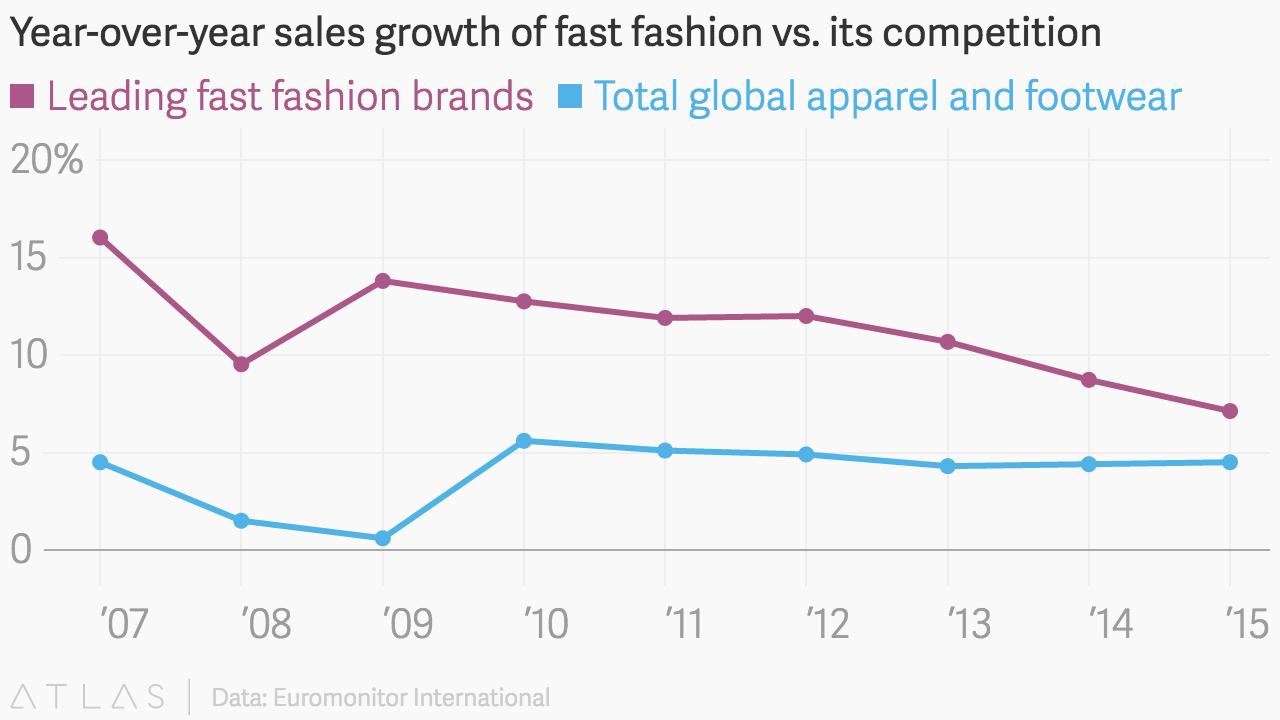
Amancio Ortega, created Zara in 1974. Dropping out of school at the age of 14, he learned how to make clothes by hand and took a chance by starting his own company. Today he has a net worth over 86 Billion dollars. He is the 4th richest man in the world.
Despite starting off as an outsider, and as a means to make the middle-class fashionable, fast fashion has turned from a fringe enterprise into leaders of the fashion industry. These days, high-society brands struggle to keep their market presence because fast fashion products are similar to the untrained eye and come at a large fraction of the price. It’s hard to compete with the $7 dollar T-Shirts when established fashion companies have traditionally relied on being chic with upscale production and providing service of a higher quality.
It’s amazing to think just how well fast fashion has seized this market. Despite having a cost first model of business, I really did feel that this 2015 Zara Spring Collection Ad looked a lot more bougie than boozie. If I didn’t know any better I would have thought I was watching a commercial for Calvin Klein.
// The Culture of Fast Fashion
Culturally, I believe our perception of clothing has changed. In the age of disposable everything (See: Cell phones, Fast Food, First-to-Document Journalist, etc.), being marketable, efficient and easily accessible seems to be the key. I believe people don’t want to pay $25 for a shirt if they can get away with paying $6. Sure the quality is by no means the same, but chances are, you own so many different outfits that your individual pieces won’t degrade as fast as they would in a small closet.
Not only has the culture of consumption changed, but I also believe that how we culturally view fast fashion companies is fundamentally different than how it used to be. In my perspective, one thing that has led fast fashion to being so influential around the world is the fact that fast fashion companies are cool now.
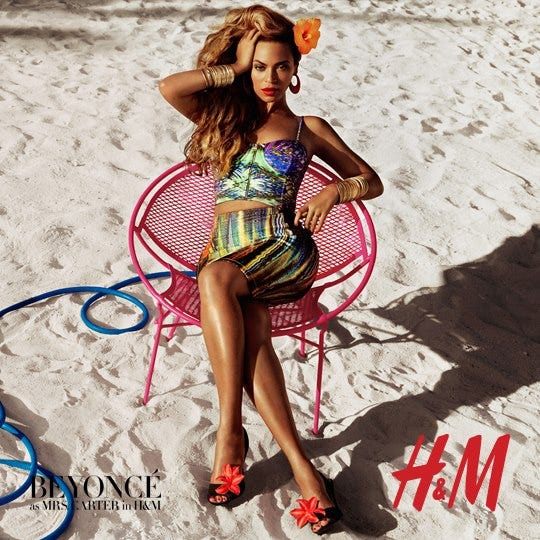
Beyoncé has collaborated with H&M, The Weeknd has designed clothes and done advertisementsfor the company; shoot even Fashion God Pharell Williams collaborated with Uniqlo in 2014. The truth is that celebrity marketing campaigns have really helped change the image of how fast fashion is perceived. It’s hard to call clothing low-quality or flimsy when A-list celebrities are willing to align their brand with the platform provided by fast fashion. Fast fashion companies are also cool because they provide a lot of value to the average consumer . The ability to dress trendy without having to buy $900 sneakers or a $2,000 dress is an extremely valuable asset that fast fashion companies consistently provide. This coupled with the notion that your favorite celebrities are also saving on the latest trends, its hard to beat.

// Can’t Beat Em? Join Em (Or Sue)
Looking to find new ways to stay profitable in today’s time, luxury brands now find themselves aligning with their fast fashion imitators in order to co-brand and bring added value to their company. H&M specifically has been a pioneer in this form of collaboration as over the last 15 years they have landed high profile projects with some of fashion’s highest nobility. This includes partnerships with the fashion elite, companies like: Karl Lagerfeld, Versace, Alexander Wang and Balmain.
The game of luxury vs. quick fashion is not always this synergy based however, as a lot of bad blood is harboured between the two industries. Luxury brands are constantly suing fast fashion players for intellectual property theft and in my opinion, its a very warranted choice of action being that the fast fashion is literally built of taking from others and building your own lane.
An interesting argument arises in that fast fashion is now leading the fashion world as it appeals to the masses in ways that are not financially feasible nor brand appropriate for high luxury fashion tycoons. This has paradoxically led to high fashion brands actually copying the designs of fast fashion conglomerates (See: YSL vs. Forever 21).
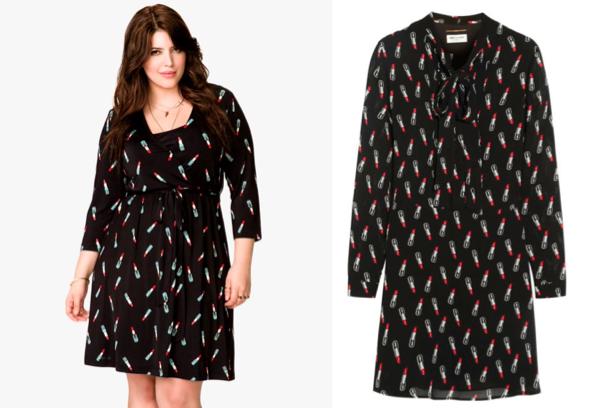
A question that proponents of high society clothing must face is: what is the right way to deal with fast fashion? Without the right innovation, luxury firms run the risk of losing business and in the worst case shutting down.
// What Does The Future Hold?

Who knows what the future of fashion will look like a few years from now. It will be interesting to see how the landscape changes as luxury brands begin to make choices about how to regain their market share.
It will also be intriguing to observe the fast fashion model and how it evolves. Will consumers always have a palette to consume the newest thing that pops up on Instagram? Or will there be a return of the high-quality low-volume method of consuming?
What we know for now is that the world is interested in consuming items for as quick and as easy as possible. If a product is cheap and meets a suitable level of quality, there is a good chance it will sell.
As for me, I think I’m going to slow my roll on the shopping. I’d like to have less items that I really care for instead of buying everything in sight. As far as the future of fashion, nobody knows for sure. When it comes to understanding the next big movements, we’re just going to have to follow the trend.
Writers Note: Fast fashion is often the subject of controversy due to human rights disputes and poor working conditions in factories. It is a serious issue and it should force us to think critically about how we buy our clothes. It is always good to be mindful as having knowledge may help us find solutions.










One Comment